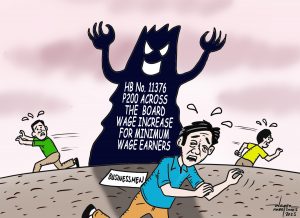EDs Note: The Davao Historical Society Foundation, Inc. published a special millennium edition of the Davao Historical Journal entitled Davao Historical Progress (2001). We take the liberty in publishing excerpts of the book every Saturday in the run up to March 1, the city’s foundation anniversary. We will first feature the article on the ‘Evolution of Davao’ by historian Gloria P. Dabbay. (p59)
Christianity was introduced in the Davao Gulf Area when Oyanguren, with his group of Spanish soldiers and their families and the native volunteers from Caraga and Surigao settled in Davao in 1848 after defeating the Muslims at the banks of the Davao River under Datu Bago. A priest was sought by the group of Oyanguren to help them build a Christian community in the area since one of the objectives in the conquest was to establish the Christian religion. It was Fr. Francisco Lopez, a Recollect priest from Surigao and friend of Oyanguren, who responded to the appeal for help. Together they built a new Christian settlement and a small chapel in the wilderness. In thanksgiving Oyanguren dedicated the settlement to St. Peter since the victory over the Muslims took place on June 29 the feast day of St. Peter.
As described priests in their regular report to their Superior, the Davao poblacion during the early period has no civilian medical doctors and no hospitals, there were no markets as there were no products to be sold (market day was scheduled only during the feast day of the town’s patron saint.) There were very few inhabitants and no official buildings except a convent serving as a government office, a jail, and a school attached to the convent with few pupils.
The local government during the Spanish time was headed by a gobernadorcillo and four cabezas de barangay. The first cabezas de barangay in 1853 were Don Gabriel Bangoy, Don Teodorico Bustamante, Don Macario Maglana, and Don Vicente Balmore.
In 1858 the province of Nueva Guipuzcoa was abolished and in its place two politico military commandancias were created – Bislig and Davao. A military government was established in Nueva Vergara and was made the Fourth District of Mindanao. The two politico-military commandancias were included in the district of Davao. About this period Nueva Vergara became known again by its native name DAVAO as clamored by the natives.
In the twilight of Spanish rule in the Philippines Mindanao had not yet been fully integrated into the rest of the Philippine archipelago. So, when the revolution against Spain broke out the reaction of the people in Mindanao, especially Davao, was that of indifference. (Excerpt from the book Davao Historical Progress 2001, Davao Historical Society Foundation Inc.)



